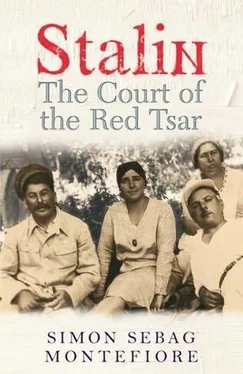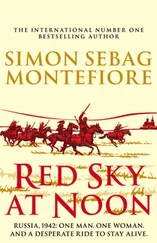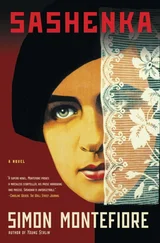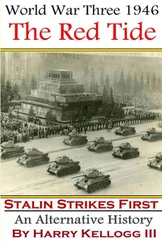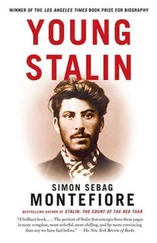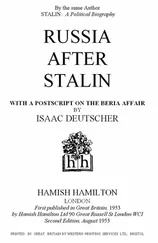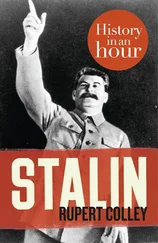On 11 September, with time running out, Budyonny, who was both braver and more competent than most of the “cavalrymen,” knew he might be dismissed or even arrested but he now insisted to Stalin that “delay [will] lead to losses in men and a huge quantity of equipment.” Stalin dismissed him next day. Appointing Timoshenko to the front, Stalin gave him a quaint gift of two pipes marked with a deer to symbolize his transfer from north to south, a rare gesture.
“You take command,” Budyonny told Timoshenko at the front. “But let’s call Stalin together and tell him to retreat from Kiev. We’re real Marshals and they’ll believe us.”
“I don’t want to put my head in the noose,” replied Timoshenko. Two days later, Kleist and Guderian’s Panzer Groups One and Two linked up at 18:20 hours a hundred miles east of Kiev, sealing five entire Soviet armies in a giant encirclement, the rotten fruit of Stalin’s obstinacy: 452,720 men were captured. By the 18th, Kiev had fallen. Stalin’s nerves held: “Plug the hole,” he ordered Shaposhnikov. “Quickly!” 15
Stalin and Beria stepped up both the repression and the redemption. More “lucky stiffs” were released to help the war effort. “There aren’t any people on whom one can rely,” Stalin murmured during one meeting on air defence at which the aircraft designer Yakovlev spoke up: “Comrade Stalin, it’s already more than a month since Balandin, our Deputy People’s Commissar, was arrested. We don’t know what he was arrested for but we can’t conceive he was an Enemy. He is needed… We ask you to examine his case.”
“Yes,” replied Stalin, “he’s already been in prison for forty days but he’s confessed nothing. Perhaps he’s not guilty of anything.” The next day, Balandin, “with hollow cheeks and shaven head” appeared for work “as though nothing had happened.” Beria and Mikoyan requested the freeing of Vannikov, arrested for arguing about artillery with Kulik. He was brought straight from his cell to Stalin who apologized, admitting that Vannikov had been right, and then promoted him to high office.
There was a certain awkwardness when the “lucky stiffs” met their torturers. Broad-faced, fair-haired General Meretskov, arrested during the first weeks of the war, had been horribly tortured by the debonair Merkulov, “the Theoretician,” with whom he had been friends before his arrest. As one of his interrogators later testified: “Brutal continuous torture was applied to Meretskov by high-ranking officials… he was beaten with rubber rods” until he was covered in blood. Now he was cleaned up and brought to Merkulov but Meretskov told his torturer that they could no longer be friends, a conversation unique to this strange time: “Vsevolod Nikolaievich, we used to meet on informal terms but I’m afraid of you now.” Merkulov smiled. Minutes later, in full uniform, General Meretskov reported for his next assignment to Stalin:
“Hello, Comrade Meretskov? How are you feeling?”
Beria also redoubled the Terror. 16As the NKVD retreated, the prisoners were not all released—even though Stalin had every opportunity to do so. Those “German spies” who had been so close to Stalin, Maria and Alyosha Svanidze, had been in prison since December 1937. Stalin remembered Alyosha who, as he himself told Mikoyan, “was sentenced to death. I ordered Merkulov to tell him before execution that if he asks the Central Committee for forgiveness, he will be pardoned.” But Svanidze proudly replied that he was innocent so “I can’t ask for pardon.” He spat in Merkulov’s face: “That’s my answer to him,” he cried. On 20 August 1941, he was shot. A few days later, at Kuntsevo, Stalin turned to Mikoyan: “Want to hear about Alyosha?”
“What?” Mikoyan, who had adored Svanidze, hoped he would be released. But Stalin matter-of-factly announced his death.
“He wouldn’t apologize. Such noble pride!” mused Stalin.
“When was this?” asked Mikoyan.
“He was shot just recently.” Maria Svanidze, who had so worshipped Stalin, was, with Alyosha’s sister, Mariko, [190] Mariko Svanidze had been Yenukidze’s secretary and was arrested soon after her boss. Their other sister, Sashiko, had died of cancer in the late 1930s.
shot the following year. 17
34. “FEROCIOUS AS A DOG”
Zhdanov and the Siege of Leningrad
While Molotov sat beside Stalin in the Little Corner, Zhdanov ruled beleaguered Leningrad like a mini-Stalin. But Stalin now turned his fury onto the commanders of the city of Lenin. [191] The opening of Stalin’s and Zhdanov’s papers allows us for the first time to listen in on their frantic efforts to save Leningrad.
By 21 August 1941, a German north-easterly thrust almost cut off Leningrad’s link with the rest of Russia. Voroshilov, now sixty, took command alongside Zhdanov. Both men had much to prove but as Leningrad was gradually enveloped, they struggled to keep Stalin’s confidence.
Day by day, the Germans tightened their grip and Stalin smelt defeatism. In a stream of dictated anxiety, he accused them of failing to grasp “this fatal danger. Stavka cannot agree with the mood of doom, and impossibility of taking strong measures and conversations about how everything possible has been done and it’s impossible to do any more…” 1Then Stalin heard that Voroshilov, replaying his glory days of Tsaritsyn in 1918, was planning to raise morale by electing officers—but this time the outraged War Commissar was not Trotsky.
“Immediately stop the elections because it will paralyse the army and elect impotent leaders,” ordered Stalin, together with Molotov and Mikoyan. “We need all-powerful leaders. It will spread like a disease. This isn’t Vologda—this is the second city of the country!” He added: “We ask Voroshilov and Zhdanov to inform us about operations. They have not done so yet. That’s a pity.”
“All’s clear,” replied Leningrad. “Goodbye Comrade Stalin. That helps. Great gratitude!” 2
Zhdanov took control of every facet of Leningrad life, declaring famously: “the enemy is at the gates.” Now plump, asthmatic and exhausted, always chain-smoking his Belomor cigarettes, clad in an olive-green belted tunic, pistol in holster, Zhdanov ran the front from the third floor of the right wing of the Smolny Institute from an office hung with pictures of Stalin, Marx and Engels. His long table was covered in red baize just as Stalin’s was in green. His desk was set with Urals stone, a present from some Leningrad factory. He drank tea, like Stalin, from a glass held in a silver holder, chewing sugar lumps and, like him, slept on his office divan. He wrote the newspaper editorials, personally allocated every volt of electricity, threatened “panic-mongers” with instant death, and shared command of the front. 3
Voroshilov meanwhile displayed the admirable courage that he had shown at Tsaritsyn. When he appeared at the front at Ivanovskoye, the soldiers watched as the First Marshal pranced around under heavy shellfire:
“That’s him! Voroshilov! Klim!” gasped the soldiers. “Look how he stands as if he grew out of the earth!” A few miles away, the Marshal came upon some troops who had broken under a German attack. He stopped his staff car, pulled out his pistol and led the troops against the Germans to the shout of “Hurrah!” The old cavalryman could buckle his swash but was unable to stabilize the front. 4
Stalin was unmoved by the heroic ineptitude of this beau sabreur . His warmth towards Zhdanov was cooling fast. When the Leningraders referred respectfully to their boss as “Andrei Alexandrovich,” Stalin answered icily: “Andrei Alexandrovich? Now which Andrei Alexandrovich do you mean?” The terrified agreement to his own orders did not help matters: “If you don’t agree,” he told Zhdanov, “say it straight.” But he also showed his sarcastic irritation, scribbling in his red pencil: “You didn’t answer the proposal. You didn’t answer? Why not?… Is it understood? When do you begin the attack? We demand an immediate answer in two words: “Yes” will mean a positive answer and swift implementation and “No” will mean a negative. Answer yes or no. Stalin.” Nonetheless he resisted any attempt to dismiss Zhdanov even though he was staggering under the burden of Leningrad’s plight. 5
Читать дальше
